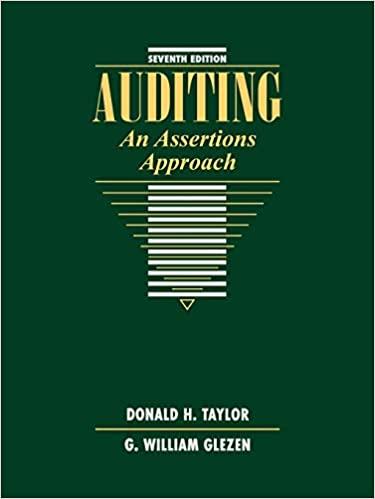John Petite was performing his first audit as a senior. His client was a small toy store
Question:
John Petite was performing his first audit as a senior. His client was a small toy store with a reputation as a solid and expanding merchandiser. John's CPA firm had performed the audit for several years, and very few problems had been encountered. There was no reason to believe this audit would be different.
John arrived at the client's place of business and waited for the office manager to introduce himself. The office manager appeared in a few minutes looking very distraught. He pulled the door shut and asked to speak confidentially to John. As far as John could tell from the fractured conversation, the following events had occurred:
1. The cashier had confessed to theft of sizable amounts of money, taken over a period of several months.
2. No one knew about the theft except the office manager and the clerk who kept the cash receipts journal.
3. The fraud had been discovered when this clerk had been assigned the task of reconciling the bank statement, a task normally assigned to the cashier. It seems that the cashier had been improperly endorsing and keeping customer checks that arrived a day or two before statements were mailed to customers.
4. The fraud had been covered by preparing fictitious deposit slips to compare with the record of cash receipts. By reconciling the bank statement, the underdeposit of cash receipts could be hidden. Customers rarely complained about receiving a statement with no credit for cash payments because they assumed that the next statement would show the proper amount of credit.
The office manager explained what had happened and asked John to begin the audit somewhere other than with cash. He told John that as soon as the matter was resolved and the books corrected, the cash part of the audit could be performed. The office manager also explained to John that nothing about this theft was being reported to upper-level management, and he asked John to refrain from discussing it with any other member of the company.
Required:
a. How should John reply to these requests by the office manager?
b. What should John do? Why?
Step by Step Answer:

Auditing An Assertions Approach
ISBN: 9780471134213
7th Edition
Authors: G. William Glezen, Donald H. Taylor





